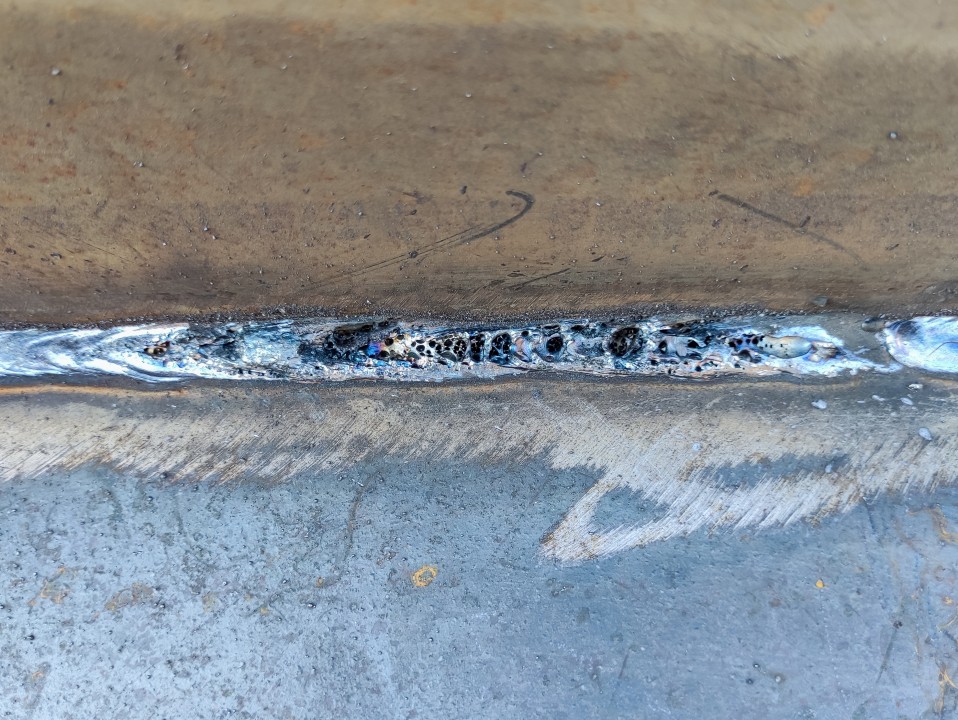What is Porosity in Welding: Comprehending Its Reasons and Enhancing Your Skills
What is Porosity in Welding: Comprehending Its Reasons and Enhancing Your Skills
Blog Article
Comprehending Porosity in Welding: Exploring Causes, Effects, and Avoidance Techniques
Porosity in welding is a relentless difficulty that can substantially affect the high quality and integrity of welds. As specialists in the welding industry are aware, recognizing the causes, results, and prevention strategies related to porosity is essential for attaining durable and trustworthy welds. By diving into the origin of porosity, analyzing its detrimental results on weld top quality, and exploring effective prevention methods, welders can boost their understanding and abilities to create top notch welds continually. The intricate interplay of elements contributing to porosity requires a detailed understanding and an aggressive technique to make sure successful welding results.
Typical Sources Of Porosity
Porosity in welding is largely triggered by a combination of factors such as contamination, incorrect protecting, and inadequate gas insurance coverage during the welding procedure. Contamination, in the type of dust, grease, or rust on the welding surface, creates gas pockets when warmed, resulting in porosity in the weld. Incorrect shielding happens when the securing gas, frequently utilized in procedures like MIG and TIG welding, is incapable to completely secure the molten weld pool from reacting with the bordering air, leading to gas entrapment and subsequent porosity. Additionally, inadequate gas insurance coverage, often as a result of inaccurate circulation rates or nozzle positioning, can leave parts of the weld unprotected, enabling porosity to form. These elements collectively contribute to the formation of spaces within the weld, damaging its stability and possibly creating architectural issues. Comprehending and dealing with these common reasons are essential steps in protecting against porosity and ensuring the high quality and toughness of welded joints.
Impacts on Weld Top Quality
The presence of porosity in a weld can substantially endanger the total quality and integrity of the welded joint. Porosity within a weld develops gaps or dental caries that weaken the structure, making it much more prone to fracturing, deterioration, and mechanical failing. These voids serve as tension concentrators, lowering the load-bearing capacity of the weld and enhancing the probability of premature failing under used stress. In addition, porosity can also function as potential sites for hydrogen entrapment, further exacerbating the deterioration of the weld's mechanical residential or commercial properties.
Furthermore, porosity can prevent the performance of non-destructive screening (NDT) look these up methods, making it testing to spot other defects or interruptions within the weld. This can bring about considerable safety issues, specifically in important applications where the structural honesty of the welded parts is critical.

Prevention Techniques Summary
Given the harmful impact of porosity on weld top quality, efficient prevention strategies are essential to keeping the structural integrity of welded joints. Additionally, choosing the appropriate welding criteria, such as voltage, current, and take a trip speed, can assist lessen the threat of porosity formation. By integrating these prevention methods right into welding techniques, the occurrence of porosity can be substantially minimized, leading to stronger and a lot more dependable welded joints.
Relevance of Appropriate Shielding
Correct shielding in welding plays an important duty in stopping climatic contamination and making certain the honesty of bonded joints. Shielding gases, such as argon, helium, or a blend of both, are commonly utilized to shield the weld swimming pool from reacting with aspects airborne like oxygen and nitrogen. When these reactive aspects come into contact with the hot weld pool, they can create porosity, resulting in weak welds with lowered mechanical residential properties.

Inadequate shielding can cause various defects like porosity, spatter, and oxidation, jeopardizing the architectural stability of the welded joint. Adhering to proper shielding practices is essential to produce premium welds with minimal problems and make certain the longevity and dependability of the bonded parts.
Tracking and Control Techniques
Just how can welders efficiently keep track of and regulate the welding procedure to make certain optimum outcomes and protect against problems like porosity? One trick technique is through making use of advanced surveillance innovations. These can consist of real-time tracking systems that supply responses on parameters such as voltage, existing, travel rate, and gas flow prices. By continuously keeping track of these variables, welders can recognize variances from the excellent problems and visite site make prompt changes to Discover More Here avoid porosity development.

Additionally, implementing correct training programs for welders is necessary for checking and managing the welding procedure properly. What is Porosity. Informing welders on the importance of preserving consistent criteria, such as appropriate gas protecting and take a trip rate, can aid prevent porosity issues. Normal analyses and accreditations can also make sure that welders excel in tracking and regulating welding procedures
Additionally, making use of automated welding systems can enhance tracking and control abilities. These systems can precisely manage welding specifications, minimizing the possibility of human mistake and making sure constant weld top quality. By combining sophisticated surveillance technologies, training programs, and automated systems, welders can successfully check and control the welding process to reduce porosity problems and achieve high-grade welds.
Conclusion

Report this page